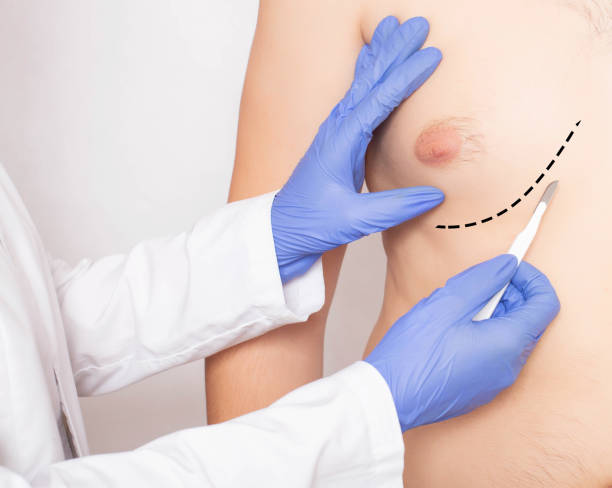Introduction to Gynecomastia Surgery
Gynecomastia in Al Ain, the enlargement of breast tissue in men, can be effectively treated through surgery. Post-surgery care is crucial for optimal recovery and achieving the best results. This article provides a detailed guide on post-surgery care for gynecomastia patients in Al Ain, covering essential steps, tips, and frequently asked questions to ensure a smooth recovery process.

Understanding Gynecomastia Surgery
What is Gynecomastia Surgery?
Gynecomastia surgery, also known as male breast reduction surgery, involves the removal of excess breast tissue, fat, and skin to achieve a flatter, more masculine chest contour. The procedure can involve liposuction, excision, or a combination of both techniques.
Goals of Post-Surgery Care
The primary goals of post-surgery care include:
-
Promoting Healing: Ensuring the surgical site heals properly.
-
Minimizing Discomfort: Managing pain and discomfort effectively.
-
Preventing Complications: Reducing the risk of infection and other complications.
Immediate Post-Surgery Care
Hospital Stay and Initial Recovery
After the surgery, patients may need to stay in the hospital for a few hours or overnight for observation. During this period:
-
Monitoring: Vital signs and overall health are closely monitored.
-
Pain Management: Pain medications are administered to manage discomfort.
First Week at Home
Once discharged, follow these guidelines for the first week at home:
-
Rest and Recovery: Rest is crucial for the first few days. Avoid any strenuous activities.
-
Wound Care: Keep the surgical site clean and dry. Follow your surgeon’s instructions on changing dressings.
-
Compression Garment: Wear the prescribed compression garment to reduce swelling and support the healing tissues.
Managing Pain and Discomfort
Medications
-
Pain Relief: Take prescribed pain medications as directed by your surgeon to manage discomfort.
-
Antibiotics: If prescribed, complete the full course of antibiotics to prevent infection.
Home Remedies
-
Cold Compresses: Apply cold compresses to reduce swelling and numb the area, but avoid direct contact with the skin.
-
Elevated Position: Keep your upper body elevated while resting to minimize swelling.
Activity and Lifestyle Adjustments
Gradual Resumption of Activities
-
Light Activities: Gradually resume light activities after the first week. Avoid lifting heavy objects or engaging in strenuous exercise for at least 4-6 weeks.
-
Walking: Short, gentle walks can promote circulation and aid in the healing process.
Diet and Hydration
-
Healthy Diet: Maintain a balanced diet rich in vitamins and proteins to support healing.
-
Hydration: Drink plenty of water to stay hydrated and help the body recover.
Follow-Up Appointments
Regular Check-Ups
-
First Follow-Up: Attend the first follow-up appointment as scheduled by your surgeon, usually within a week post-surgery.
-
Ongoing Monitoring: Regular check-ups are essential to monitor healing progress and address any concerns promptly.
Addressing Complications
-
Signs of Infection: Be vigilant for signs of infection such as increased redness, swelling, or discharge. Contact your surgeon immediately if these symptoms occur.
-
Persistent Pain: If pain persists despite medication, consult your surgeon for further evaluation.
FAQs About Post-Surgery Care for Gynecomastia Patients
How long does it take to recover from gynecomastia surgery?
Recovery time varies among individuals, but most patients can return to normal activities within 4-6 weeks. Full recovery, including the final results, may take several months.
Can I exercise after gynecomastia surgery?
Avoid strenuous exercise and heavy lifting for at least 4-6 weeks. Light activities and walking are encouraged as soon as you feel comfortable.
Will there be visible scars after the surgery?
Incisions are typically made in inconspicuous areas to minimize visible scarring. Over time, scars will fade and become less noticeable with proper care.
How can I ensure the best results from my gynecomastia surgery?
Follow your surgeon’s post-operative instructions diligently, attend all follow-up appointments, and maintain a healthy lifestyle to ensure the best results.
Is it normal to experience emotional changes after surgery?
Yes, it is common to experience emotional changes after surgery due to physical alterations and the recovery process. Support from family, friends, and healthcare professionals can help manage these feelings.
Conclusion
Proper post-surgery care is essential for gynecomastia patients in Al Ain to ensure a smooth recovery and achieve optimal results. By following the guidelines on rest, wound care, pain management, and lifestyle adjustments, patients can support their healing process effectively. Regular follow-up appointments and vigilant monitoring for complications are crucial for a successful outcome. Embrace these post-surgery care tips to enjoy a confident and healthy life post-gynecomastia surgery.



